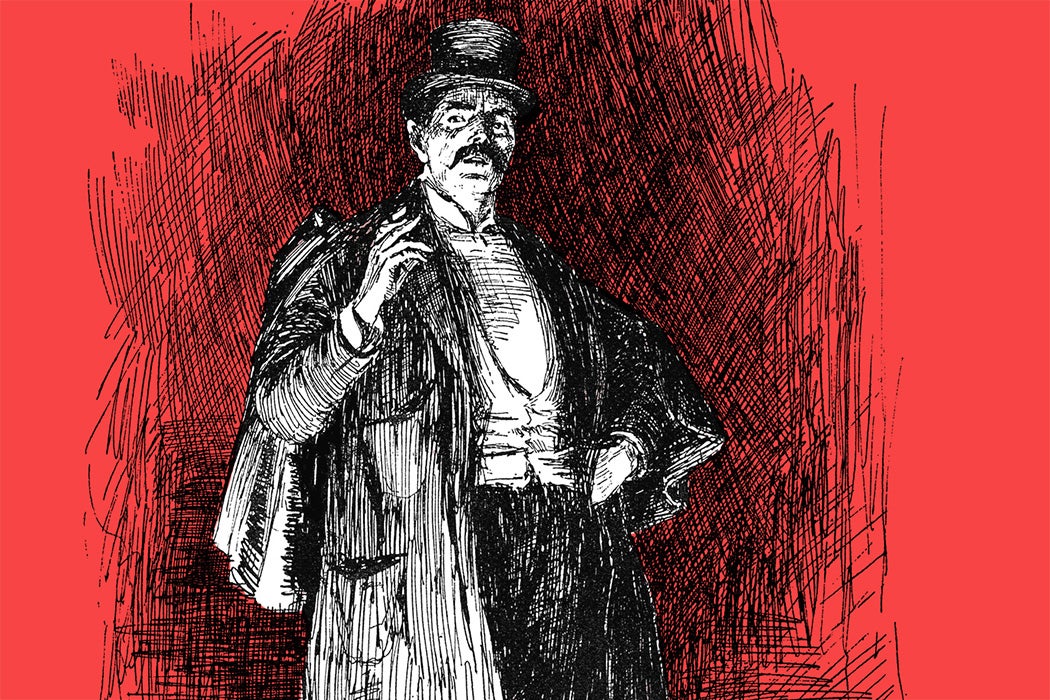In the late nineteenth and early twentieth century, British detective novels envisioned a new kind of crime fighter, equipped with technical know-how and inductive reasoning skills. As literature scholar Alyce von Rothkirch writes, they set those detectives in motion against a wide variety of villains expressing many popular worries of the time.
One type Rothkirch notes is the atavistic “born criminal.” This played on popular Darwinian ideas about human behavior, including the notion that “higher” levels of human development meant more powerful moral instincts.
In detective stories, immoral, animalistic villains were frequently literal degenerates. For example, Dr. Grimseby Roylott, an evildoer from Sir Arthur Conan Doyle’s 1892 Sherlock Holmes story “The Adventure of the Speckled Band,” comes from a prominent family but has fallen to a lower level of development as a result of living abroad, leading him to plot against the lives of his stepdaughters for personal gain. Roylott’s deviance appears physically in his wrinkled, yellow face “marked with every evil passion.” On other hand, Philip Bawdry, another atavistic villain from a “good” family, found in Thomas Hanshew’s “The Riddle of the Ninth Finger” (1918), isn’t outwardly repulsive. But when his evil deeds are revealed, he snarls and bites like an animal.
Rothkirch suggests that the frequent focus on people from the upper classes suggests anxiety about the country itself.
“The danger stems from the fact that these and similar families rule the country and the Empire: the public fear of degeneration was a fear of the invisible disintegration of the nation itself,” she writes.
Another figure found in many stories was the foreigner, who might be exotic and frightening or might disguise his origins. However, Rothkirch writes, the authors usually “add a knowing twist” to stereotypes of people from other countries. In Ernest Brahman’s “The Knight’s Cross Signal Problem” (1914), a young Indian villain responsible for causing a railroad disaster tells private investigator Mr. Carlyle that “you and your Government and your soldiers are responsible for the death of thousands of innocent men and women in my country every day.” However, his motives soon turn out to be private gain rather than political action. On the other hand, in Arthur Morrison’s “The Case of Mr. Loftus Deacon,” a Japanese “villain” is depicted as having good reason for stealing a sword that originally belonged to his family from an art dealer.
Weekly Newsletter
Another common type of villain Rothkirch found was habitual and professional criminals. Very often, these were professional jewel thieves—something that was no doubt rare in real life but that suited plots related to conspicuous and undeserved wealth.
But the most common type of villain was the opportunistic criminal. This was sometimes a resentful underling or someone who felt cheated out of money or power. Their misdeeds are most often flashy property crimes like bank robbery and jewel theft. Rothkirch suggests that one reason for this focus was an anxiety, particularly among conservatives, about a social order increasingly built on money rather than on aristocratic land ownership.







